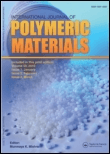
International Journal of Polymeric Materials and Polymeric Biomaterials
Scope & Guideline
Connecting Academia and Industry in Polymer Science
Introduction
Aims and Scopes
- Biopolymeric Materials for Biomedical Applications:
The journal addresses the synthesis and application of biopolymers (e.g., chitosan, alginate, gelatin) in medical fields, particularly in tissue engineering and drug delivery systems. - Nanotechnology in Drug Delivery:
A core area of focus is the integration of nanotechnology with polymeric materials to develop advanced drug delivery systems, including nanocarriers, hydrogels, and microparticles for targeted therapy. - Sustainable and Eco-friendly Polymers:
Research on bio-sourced, biodegradable, and environmentally friendly polymers is increasingly highlighted, aligning with global sustainability goals. - Innovative Fabrication Techniques:
The journal covers novel fabrication methods such as electrospinning, 3D bioprinting, and co-electrospinning for creating advanced scaffolds and drug delivery systems. - Characterization and Performance Evaluation:
Emphasis on the characterization of polymeric materials, including mechanical, thermal, and biological properties, to assess their suitability for specific biomedical applications.
Trending and Emerging
- Smart and Responsive Polymers:
Research into smart polymers that respond to environmental stimuli (e.g., pH, temperature, and light) is rapidly increasing, showcasing their potential in controlled drug delivery and tissue engineering. - Advanced Nanocarriers for Drug Delivery:
There is a growing trend towards developing sophisticated nanocarrier systems, including liposomes, dendrimers, and hybrid nanoparticles, which enhance drug solubility and targeting capabilities. - 3D Bioprinting in Tissue Engineering:
The incorporation of 3D bioprinting techniques for creating complex tissue structures is on the rise, allowing for more accurate modeling of biological tissues. - Integration of Biomaterials with Stem Cell Therapy:
Emerging research focuses on combining polymeric scaffolds with stem cell therapy for enhanced tissue regeneration, indicating a multidisciplinary approach to biomedical challenges. - Antibacterial and Antimicrobial Polymers:
The development of polymers with inherent antibacterial properties is increasingly relevant, particularly in addressing infections associated with medical implants and wound care.
Declining or Waning
- Traditional Polymer Applications:
Traditional polymer applications in general consumer products are becoming less of a focus, with a noticeable shift towards specialized biomedical applications. - Non-biodegradable Polymers:
There has been a marked decrease in research involving non-biodegradable polymers for biomedical applications, as the field increasingly emphasizes sustainability and biocompatibility. - Basic Polymer Chemistry:
While foundational polymer chemistry is essential, the journal has seen a reduction in publications that focus solely on basic synthetic methods without direct biomedical implications. - Passive Drug Delivery Systems:
Research on passive drug delivery systems is waning as there is a growing interest in more active and targeted systems that enhance therapeutic efficacy.
Similar Journals

INTERNATIONAL JOURNAL OF POLYMER ANALYSIS AND CHARACTERIZATION
Exploring innovative methodologies in polymer characterization.International Journal of Polymer Analysis and Characterization is a distinguished scholarly publication dedicated to the field of polymer science, with a focus on innovative methodologies and significant advances in the analysis and characterization of polymeric materials. Published by Taylor & Francis Ltd in the United Kingdom, this journal serves as a vital resource for researchers, professionals, and students deeply engaged in Analytical Chemistry, Chemical Engineering, and Polymer Science. With a convergence spanning from 1995 to 2024, it holds a Q3 ranking in the 2023 category quartiles for its valuable contributions to the fields of Analytical Chemistry, Chemical Engineering, and Polymers and Plastics. Despite being a non-open access publication, its rigorous peer-review process and comprehensive coverage of current trends ensure that the journal remains a crucial platform for disseminating impactful research. The journal is indexed in various databases, underscoring its relevance and quality in the academic community. Exploratory studies and articles that push the boundaries of polymer analysis find a welcoming home within these pages, making it an essential read for those aiming to stay at the forefront of polymer research.
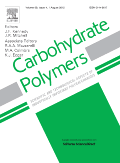
Carbohydrate Polymers
Exploring the synergy of chemistry and polymers.Carbohydrate Polymers is a prestigious academic journal, published by ELSEVIER SCI LTD, that plays a vital role in the field of materials chemistry, organic chemistry, and polymer science. With its Q1 category rankings in these domains, this journal serves as a critical platform for disseminating high-quality research, innovative methodologies, and significant advancements in carbohydrate-based polymers. Since its inception in 1981 and continuing until 2025, it has fostered critical discussions and collaborations among researchers, professionals, and students worldwide. Although it does not offer open access, its rigorous peer-review process ensures that only the most impactful studies are published. By highlighting new developments in the synthesis, characterization, and application of carbohydrate polymers, Carbohydrate Polymers consistently contributes to the enhancement of knowledge and technology within its field, making it an essential resource for anyone working at the intersection of chemistry and materials science.

MACROMOLECULAR BIOSCIENCE
Elevating Research Standards in Biomolecular DisciplinesMACROMOLECULAR BIOSCIENCE, published by WILEY-V C H VERLAG GMBH, is a leading journal in the fields of bioengineering, biomaterials, biotechnology, materials chemistry, and polymers and plastics. With a convergence of scientific inquiry since its inception in 2001, the journal has established itself as a vital resource for researchers and professionals exploring the interface of molecular sciences and biosystems. It boasts impressive Scopus rankings, including Q1 status in multiple categories, reflecting its significant contribution to advancing knowledge and innovation in the polymer and biomaterials domains. While the journal does not currently offer open access options, its rigorous peer-review process ensures the publication of high-quality research that fuels academic discourse. Positioned in Weinheim, Germany, MACROMOLECULAR BIOSCIENCE aims to bridge theoretical understanding with practical applications, making it an essential reference for students, academics, and industry practitioners dedicated to the evolving landscape of macromolecular bioscience.
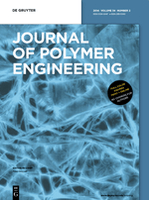
JOURNAL OF POLYMER ENGINEERING
Fostering Collaboration in Polymer Innovation.JOURNAL OF POLYMER ENGINEERING, published by Walter de Gruyter GmbH, stands as a pivotal platform in the field of polymer science and engineering. With an ISSN of 0334-6447 and an E-ISSN of 2191-0340, this journal has been a vital contributor to the academic landscape since its inception, spanning publications from 1981 to 2024. As a recognized entity in the realms of Chemical Engineering, Materials Chemistry, and Polymers and Plastics, it holds a respectable position in Q3 quartile rankings according to the latest assessments. The journal is positioned to promote the exchange of cutting-edge research findings, technological advancements, and critical reviews that address the complexities of polymer application and innovation. Researchers and professionals will find a wealth of information, from experimental methodologies to theoretical analyses, all designed to inspire and elevate the current understanding of polymer engineering. By fostering collaboration and dissemination of knowledge, the JOURNAL OF POLYMER ENGINEERING remains crucial for advancing research and education in its specialized domains.

JOURNAL OF POLYMER MATERIALS
Shaping the Landscape of Polymer ApplicationsJOURNAL OF POLYMER MATERIALS, published by PRINTS PUBLICATIONS PVT LTD, is a pivotal platform within the field of materials science, focusing particularly on polymer and plastics research. Established in 1987, this journal has played a crucial role in disseminating innovative findings and advances in polymer materials, catering to a diverse readership of researchers, professionals, and students alike. Despite a break in Scopus coverage, it continues to contribute valuable insights into materials chemistry, reflected in its rankings within the lower quartile in related categories. With an ISSN of 0973-8622, the journal seeks to foster a greater understanding of polymer science and applications. Researchers are encouraged to submit their findings to a journal that aims to bridge the gap between theoretical research and practical application. While currently not offering open access, readers can benefit from the journal's commitment to scholarly excellence. Located in New Delhi, India, the JOURNAL OF POLYMER MATERIALS remains a significant resource for those passionate about polymeric materials and their extensive applications.

Polymers
Empowering scientists to shape the future of materials.Polymers is a premier journal published by MDPI, dedicated to advancing the field of polymer science and technology. This open-access journal, established in 2009, has quickly gained prominence in the academic community, serving as a vital platform for disseminating high-quality research articles, reviews, and communications in the realms of chemistry, polymers, and plastics. Based in Switzerland, with an impressive ranking in the Q1 quartile for both Chemistry and Polymer studies, Polymers boasts a significant impact factor, reflecting its rigorous peer-review process and esteemed editorial board. Researchers, professionals, and students alike benefit from the broad accessibility of content, allowing for a more extensive reach and engagement within the scientific community. As a key resource for the latest advancements and innovations in polymer research, Polymers continues to lead discussions, inspire collaborations, and foster the development of novel materials that shape various industrial applications.
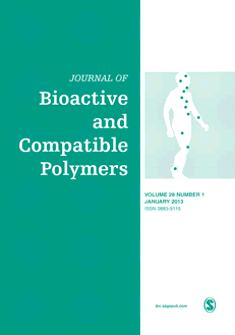
JOURNAL OF BIOACTIVE AND COMPATIBLE POLYMERS
Shaping Tomorrow's Technologies with Polymer InsightsJOURNAL OF BIOACTIVE AND COMPATIBLE POLYMERS, published by SAGE PUBLICATIONS LTD, serves as a pivotal platform for disseminating innovative research in the fields of bioengineering, biomaterials, materials chemistry, and polymers. With an ISSN of 0883-9115 and an E-ISSN of 1530-8030, this journal is committed to the advancement of knowledge relating to the interaction of polymers within biological systems and their compatibility in various applications. Operating since 1986, the journal has garnered a respectable presence, ranked in the Q3 quartile across multiple categories in 2023, indicating its relevance and contribution to these dynamic fields. Although not open access, the journal ensures that high-quality research is accessible to subscribers and institutions, reinforcing its importance for researchers, professionals, and students aiming to stay abreast of advancements in polymer science and biocompatibility. By fostering interdisciplinary communication and collaboration, the JOURNAL OF BIOACTIVE AND COMPATIBLE POLYMERS continues to play a crucial role in shaping the future of material applications in health, technology, and industry.
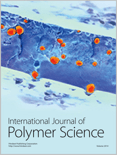
International Journal of Polymer Science
Unlocking the Potential of Polymer ScienceInternational Journal of Polymer Science is a prominent and peer-reviewed journal dedicated to advancing the field of polymer science. Published by Hindawi Ltd, this open-access journal has been making significant contributions to the discipline since its inception in 2009, ensuring that research findings are accessible to a global audience. With an impressive impact factor and positioned in the Q2 quartile for Polymers and Plastics as of 2023, it ranks 46th out of 161 in the Scopus database, reflecting its strong standing in the research community. The journal welcomes innovative research across various topics within polymer science, including synthesis, characterization, and applications in diverse industries. By providing a platform for scholars, professionals, and students, the International Journal of Polymer Science not only encourages the dissemination of knowledge but also fosters collaboration and innovation in this essential field. Based in Egypt and operating under a rigorous selection process, it remains a vital resource for anyone involved in polymer research.

ACS Macro Letters
Innovating Research for Tomorrow's Chemical ChallengesACS Macro Letters, published by the American Chemical Society, is a leading journal in the fields of Inorganic Chemistry, Materials Chemistry, Organic Chemistry, and Polymers and Plastics. Established in 2012, this journal has swiftly ascended to the forefront of chemical research with an impressive reputation, as evidenced by its 2023 Scopus rankings placing it in the first quartile across multiple categories. The journal's objective is to disseminate timely and concise articles that advance the study of macromolecules and their applications, making it an essential resource for researchers, professionals, and students alike. With a focus on fostering innovation and facilitating collaboration within the chemical community, ACS Macro Letters presents a robust platform for scientists to share their groundbreaking findings. Being based in the United States, it serves as a central hub for global discourse in the chemical sciences, although it does not currently offer Open Access options. The journal's commitment to high-quality content is further underscored by its prestigious impact factor and acceptance into elite academic quartiles, signifying its influence and importance in shaping future research.

CELLULAR POLYMERS
Unveiling the Potential of Cellular PolymersCELLULAR POLYMERS, published by SAGE Publications Ltd, is a leading journal dedicated to the exploration and advancement of polymer science, particularly within the realms of organic chemistry and materials science. With an ISSN of 0262-4893 and E-ISSN of 1478-2421, this journal has been a critical resource for researchers and professionals since its inception in 1982, continuously evolving to retain its relevance in an ever-advancing field. Currently, it ranks in the Q3 quartile for both Organic Chemistry and Polymers and Plastics, reflecting its focused contributions to these disciplines. Despite accessing content through subscription, the journal’s indexed visibility in databases such as Scopus, with a percentile ranking of 41st in its category, highlights its significance in the academic community. CELLULAR POLYMERS serves as a platform for innovative research and developments in polymer processing, characterization, and applications, aiming to foster interdisciplinary collaborations and knowledge dissemination among scholars, practitioners, and students alike.